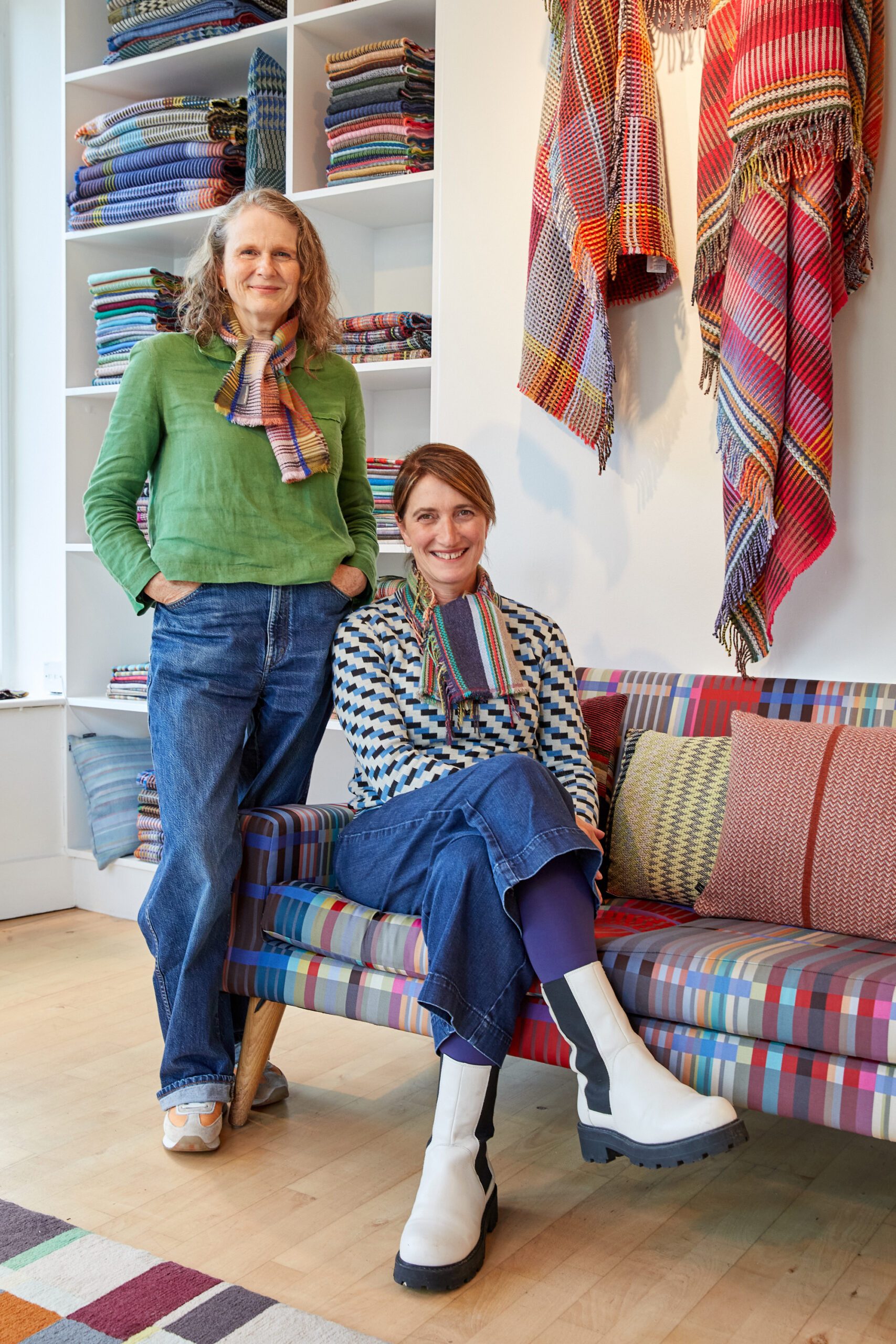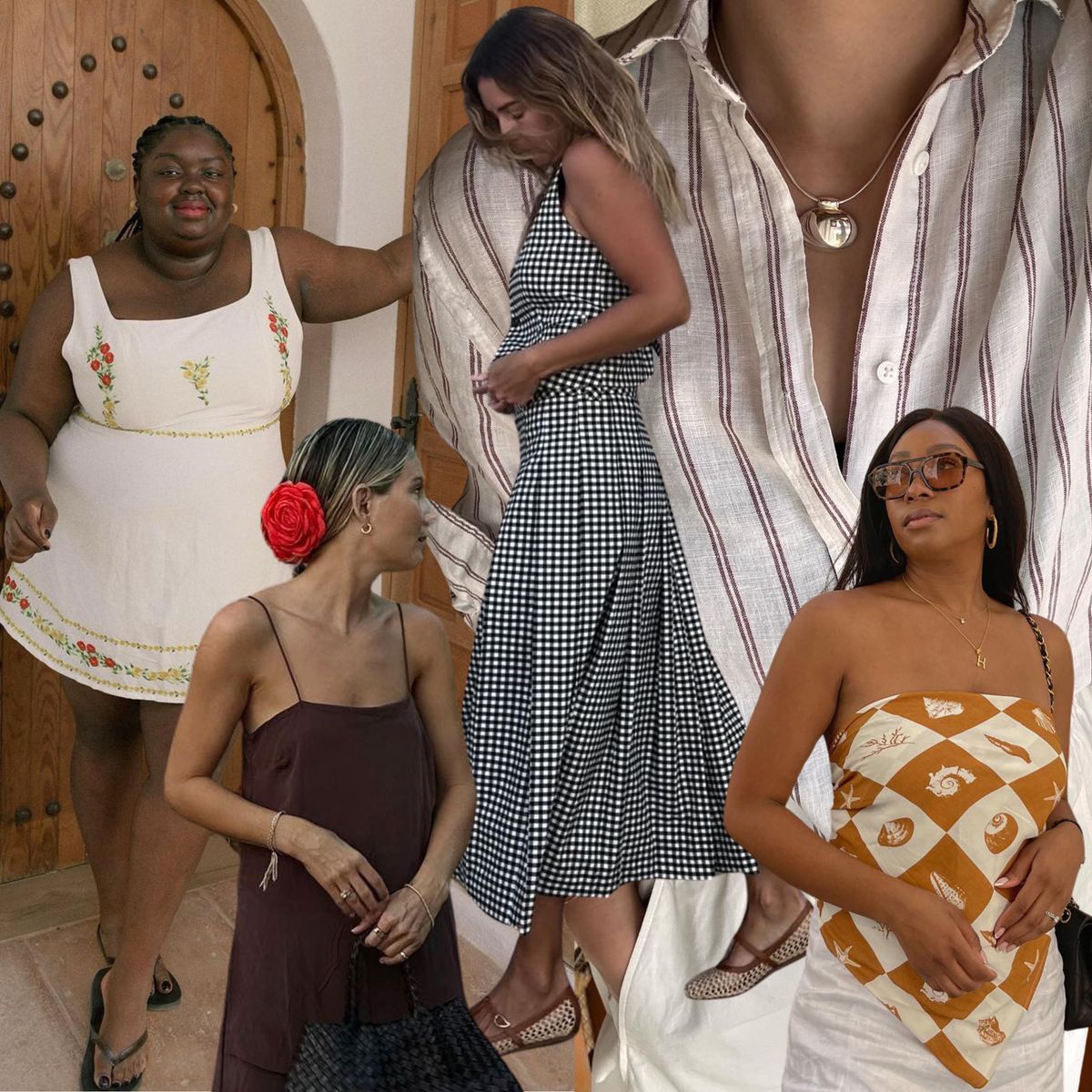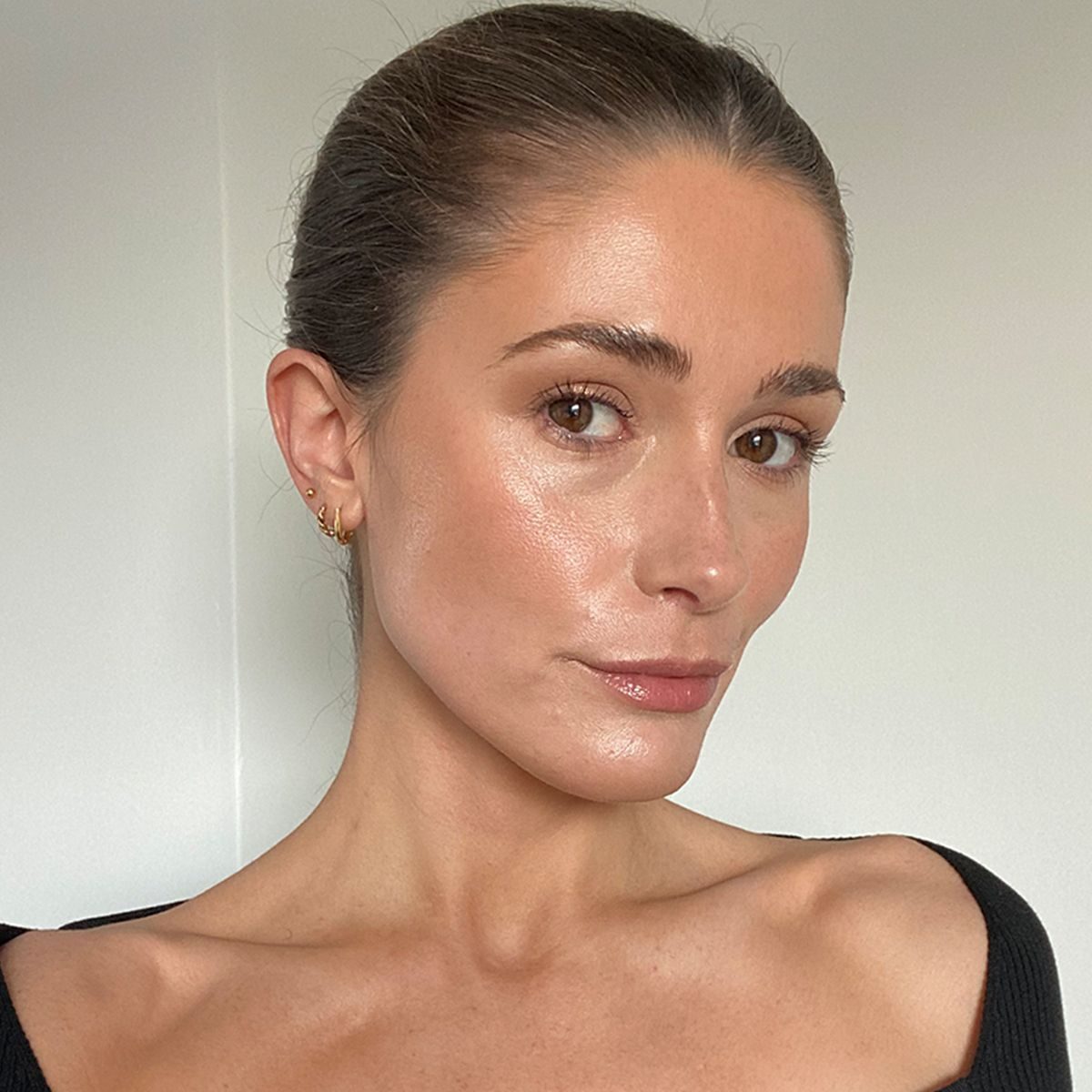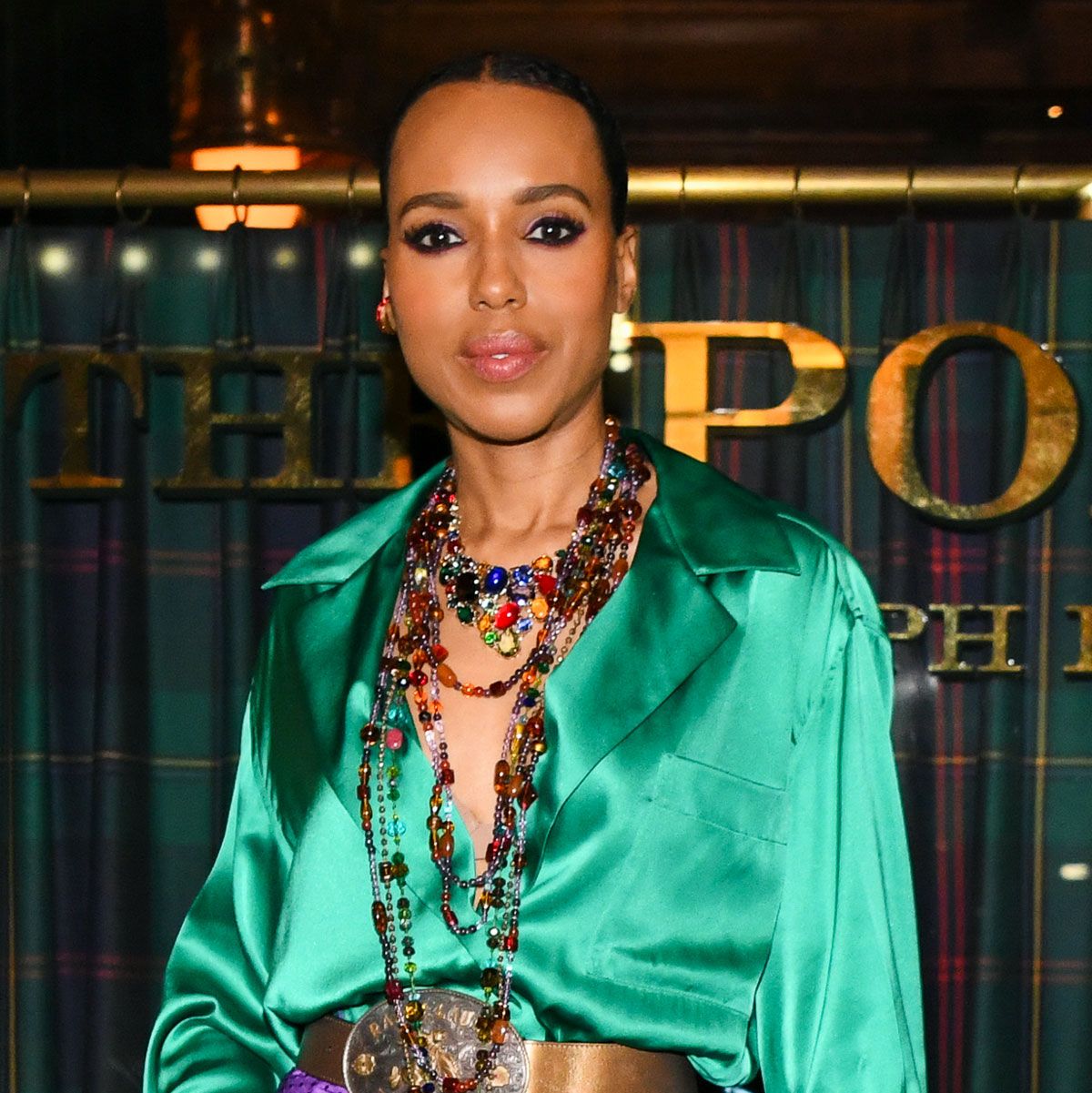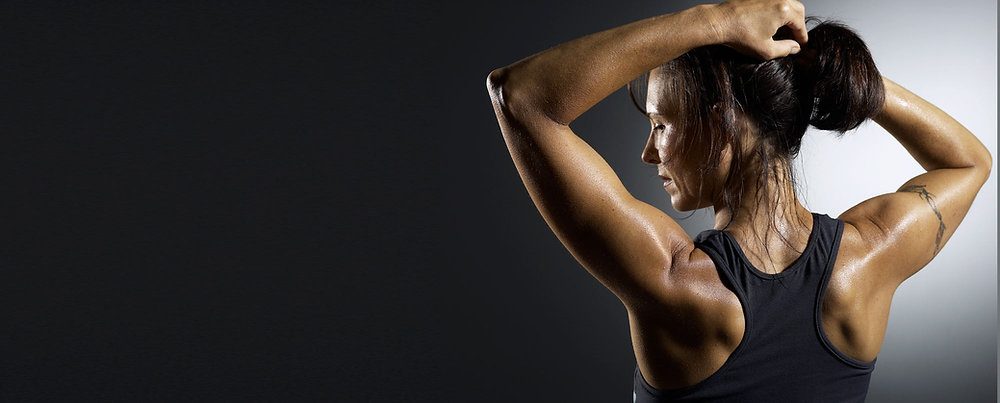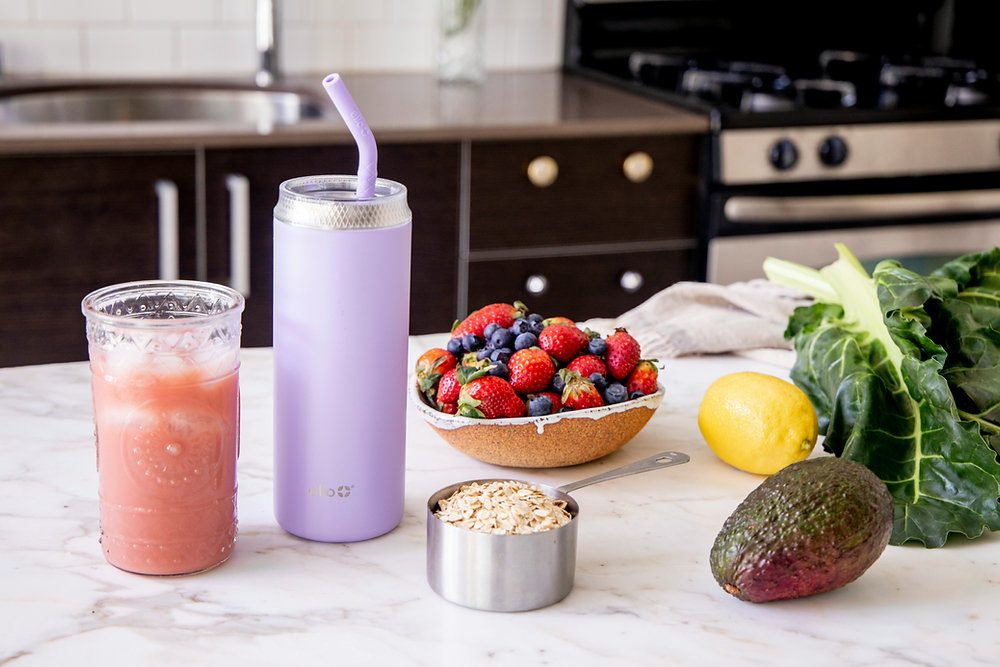Wallace Sewell with their 30th anniversary throw. Photos: Claire Pepper
Sitting in their Clerkenwell design studio, Harriet Wallace-Jones and Emma Sewell are enthusiastic and friendly and have worked together for so long, they finish each others sentences off. The pair specialise in multicoloured, woven textiles. Wallace#Sewell’s signature products range from beautiful, patterned wool and printed silk scarves, striped and colour-blocked lambswool rugs and throws, to London Transport ‘moquettes’ – if you’ve travelled on the underground, you will probably have parked your bum on one of their fabrics.
Wallace#Sewell met as undergraduates at Central Saint Martins, went on to study for an MA in Textile Design together at the Royal College of Art and are currently celebrating 30 years in business. Their stunning, colourful textiles are ‘designed in the south and woven in the north’ and available via over 400 stockists around the world, including boutique hotels, museums and design stores. The Wallace#Sewell studio is committed to sustainability and designing with longevity in mind, so much so that customers are given instructions on how to ensure their product lasts a lifetime.
We had a chat about their career highlights and 30 years of Wallace#Sewell:
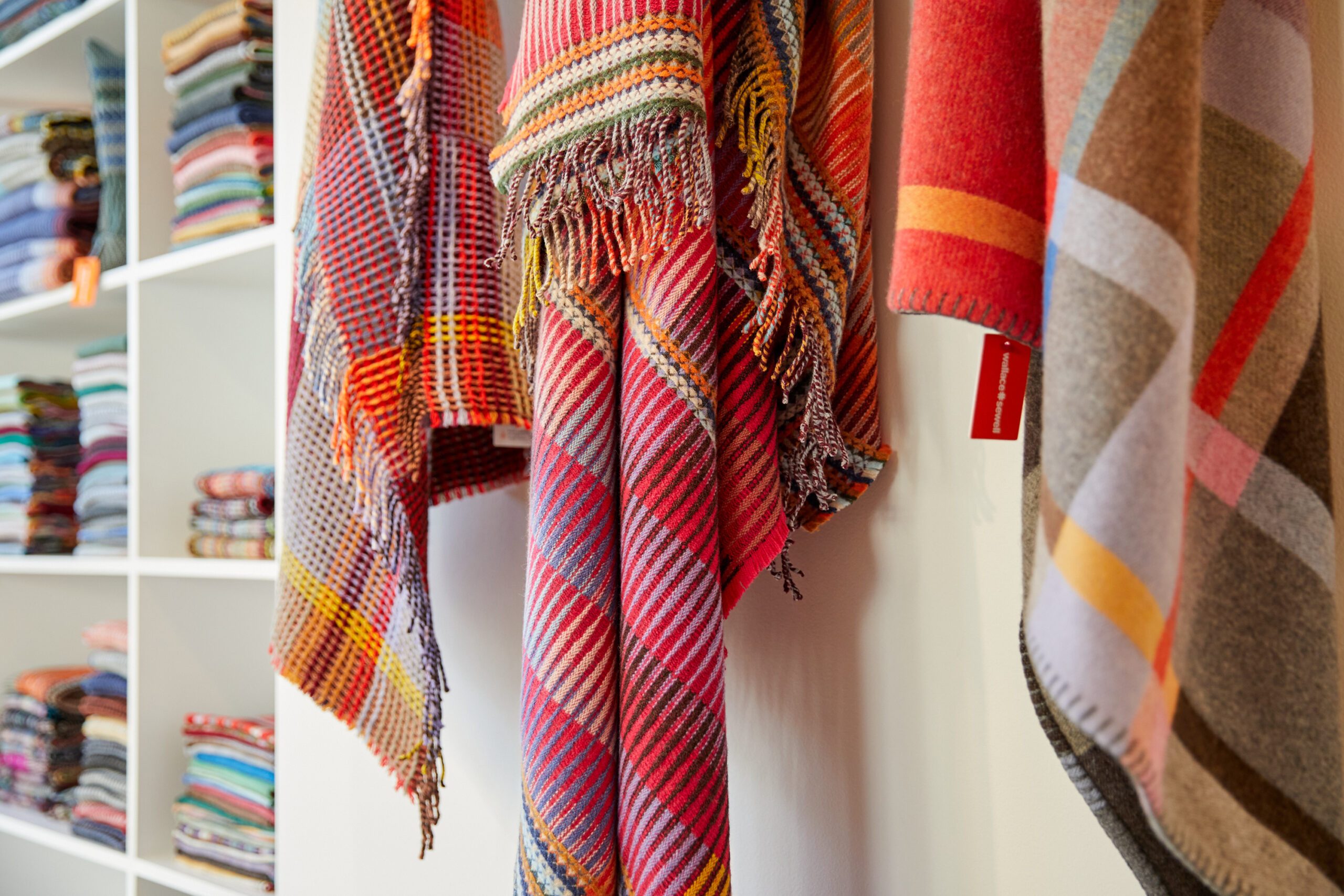
The 30#30 anniversary throw (centre)
TNMA: How does it feel to be celebrating 30 years in business?
Wallace: It does seem bizarre that we’ve been together since Central Saint Martins (CSM), then on to the Royal College, and it’s gone like a flash. What’s interesting is that when we do retrospectives, going back through the archives really brings this journey to life and pinpoints special and important moments for us.
Sewell: And it’s still a thrill when you spot someone on the street wearing one of our pieces. Once we were at JFK and it was really late, we were both really tired and there was this guy in one of those massage areas wearing one of our scarves! We don’t feel blasé when we see people wearing them. It’s wonderful.
Wallace: It’s like a competition – the more points you get the further away you are from the office. I once saw someone in Australia…
TNMA: Do you always have a scarf on?
Sewell: Oh yes! I have scarves everywhere. Sometimes I even wear two! A small ‘tippet’ when I’m inside and at my desk, and then layer up with a large wrap when I head out. Our scarves are designed to go with everything. Like a painting. Then the rest of what you’re wearing can sing as well.
TNMA: And what are your career highlights?
Wallace: When we worked with Transport For London that was something we’d dreamed of doing. Ever since college we’d dreamed of creating designs for the public domain, that so many people would see and interact with. As designers, our collection had become very colourful and has been described as opulent and sumptuous; and then the Transport project came along, which took us right back to our roots. When you are designing for a utilitarian outcome and your palette is limited, then you must think around that problem. It was a fantastic challenge.
Sewell: When we’re designing our own collection, we’re used to having freedom, and working (mostly) without many limits but this project had many variables to consider. The tuft size, pattern repeating, limits to the number of colours. We had to think about the balance of colour and tone – especially when designing for the Elizabeth Line.
Wallace: It was great that the Queen went for a trip on it!
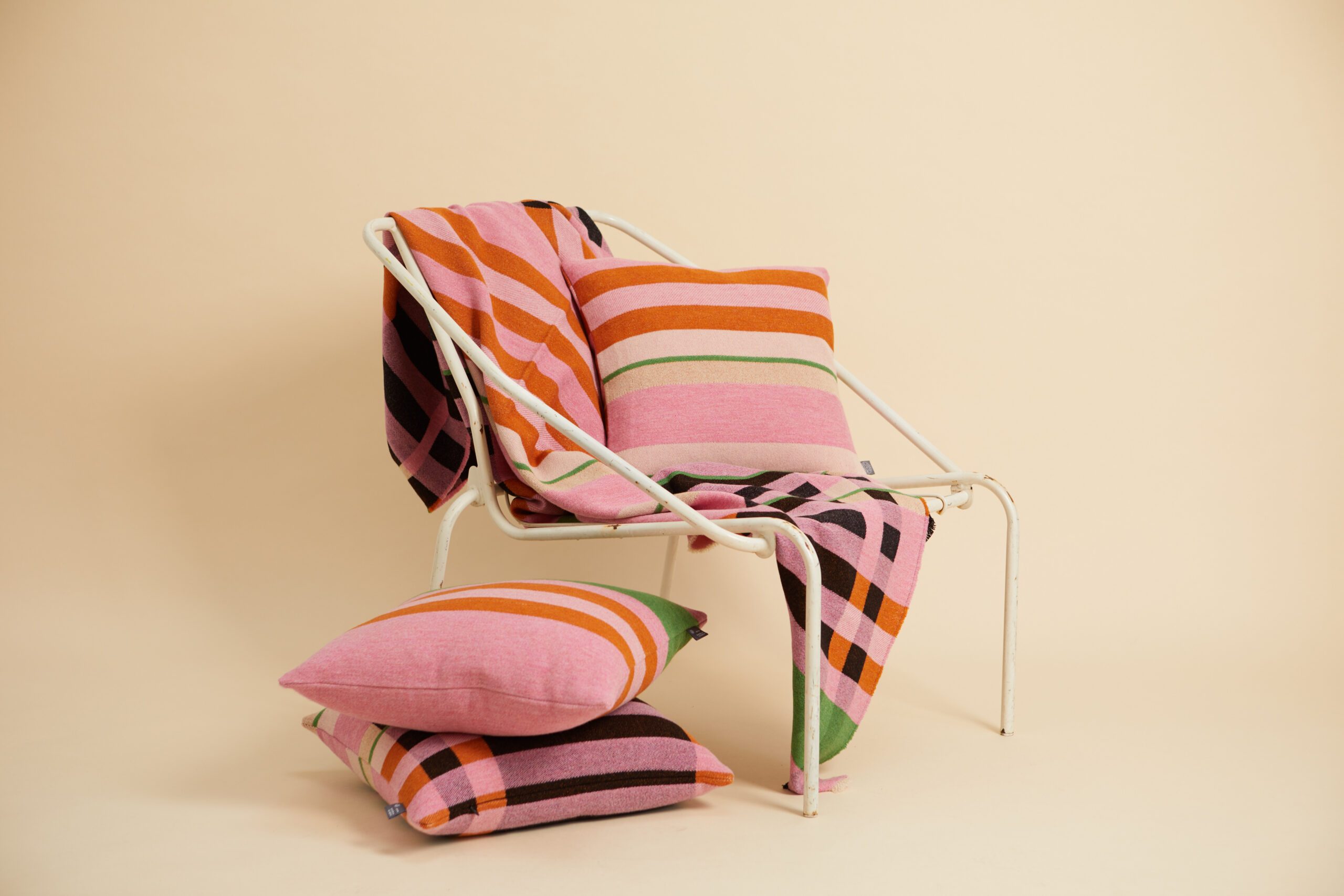
From the Bauhaus Project: the Stolz blanket and cushions in nougat. Photo: Wallace Sewell
Sewell: The Bauhaus Project was another highlight. We were asked to recreate a blanket by Gunta Stölzl. When the Bauhaus moved to Dessau in 1926, Stölzl designed a blanket for the ‘Prellerhaus’ student dormitories, the so-called ‘Prellerdecke’ (‘Preller’ after painter Friedrich Preller and ‘decke’ meaning bedcover). Sadly, the last original blanket was lost after an exhibition in the USA. We had to really analyse archive photographs and drawings to consider the design for our version. Then we created sketches and colour swatches and worked on design development by hand (on small looms) in the Wallace#Sewell studio, before weaving full-scale pieces at a mill in Lancashire.
Wallace: We’ve always been extremely passionate about the Bauhaus movement and colour theory so it was the ultimate accolade to be able to work on this piece. We wanted to pay homage to the rhythm and simplicity of the original. We were lucky enough to go out there and stay in the dorms. We even got to meet Gunta’s daughter, Monika Stadler, and see the archive of her mum’s work. It was wonderful, and she was a lovely lady. Her mother is an icon of design. To pull it all together involved connecting research, design and intuition; the entire project was a brilliant experience.
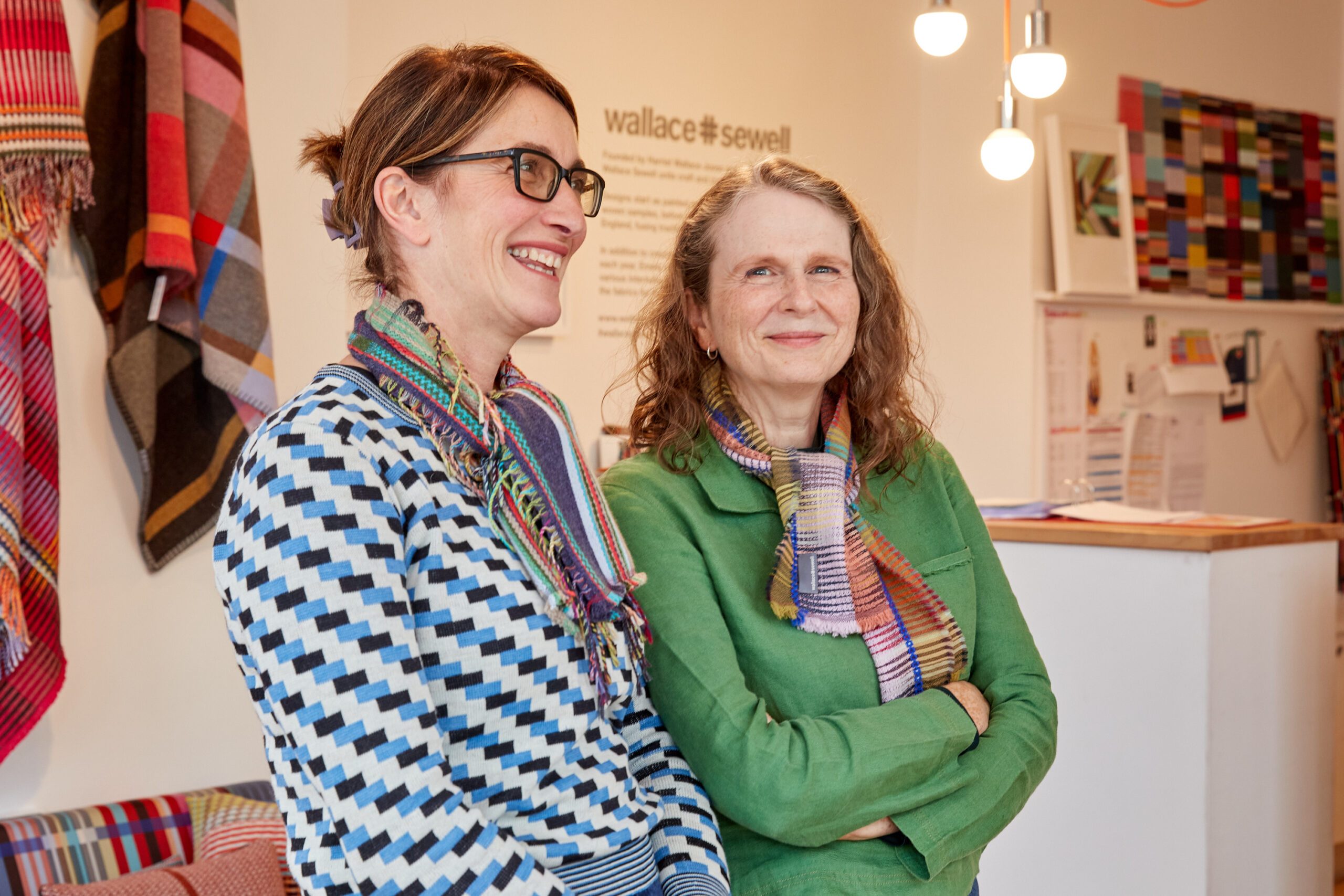
TNMA: How do you work together?
Wallace: When we first left the Royal College, we joined forces to share a studio together, we were working on individual projects and didn’t plan to set up a business. Then there was a tipping point – we both received Setting Up grants from the Crafts Council, and took a joint stand at Chelsea Crafts Fair and Wallace#Sewell was born. We just needed a brand name. After a few ideas, we fixed on our two names and Emma’s boyfriend created the logo. The hashtag was there before hashtags were even a thing! Just a combination of the ‘double Ls’ in our surnames, woven together.
Sewell: We work separately, and together, as Harry lives in Dorset, where she moved with her kids in 2008. At first we wondered if we could make it work, and we know now that it’s helped us enormously. We work independently and then share our ideas and samples with each other when we’re together. The act of presenting to each other, reinforces what we are wanting to achieve with our designs.
Wallace: I travel up once a week, and more if we have something special going on. I have a warehouse space in Dorset with a loom, where I work. Our designing styles are quite different but complement each other. We each have out strengths and different ways of working. Emma is fascinated with the structure of the cloth and woven details, whereas I love creating compositions on loom. As a partnership, working very closely, it’s a real discussion. Sometimes I’ll design one element of a piece and then Emma will finish it off. It’s a collaborative approach. We aim for the perfect fusion of modern design and traditional techniques.

Sewell: When we expanded enough to need another designer it was a real learning curve. We had to learn to let go a little and share, after spending so many years having direct control ourselves. It’s been liberating though, it’s great to have more voices in the design discussion.
Wallace: Everything is woven in Lancashire, between Skipton and Colne. A place called Foulridge, which is tiny. It’s a fourth generation family-run mill from the 1700s and we’ve now been working with them since 2000. We’ve been round so many mills and, honestly, we were so blown away by all the state of the art facilities they had.
Sewell: When we first left college it was hard to get mills to talk to us. We always had to make introductory visits to meet a new mill and even get hands on and help with various stages of production. It taught us lots about the capability of the looms and the industrial processes, and how it fits together. Small batch production wasn’t really a business model that existed when we started out, in the 90s, so we were one of the few businesses doing small runs.
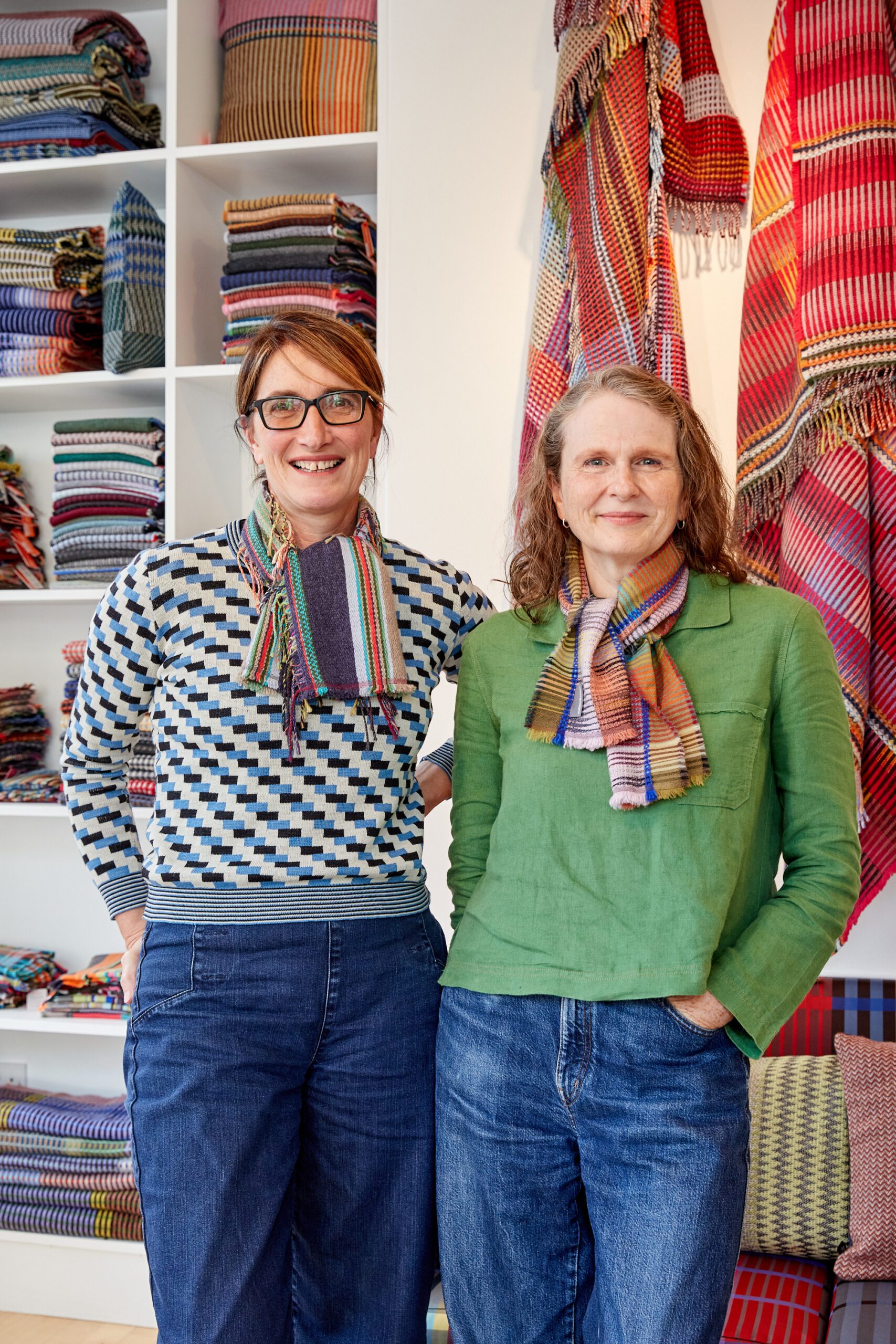
TNMA: How do you work out your colour combinations and figure out what goes with what?
Sewell: It goes back to what we learned about colour theory from the Bauhaus movement. How colours affect each other, and ‘simultaneous contrast’. So, consider the most well-known colour combinations, on opposite sides of the colour wheel: red and green, purple and yellow, blue and orange. Then you have all the colours in between like a rusty orange or a green-y blue. You consider the saturation, how clean the colours are, the tone – and it’s then that you have to balance them all out. You’re playing with tension. One’s light the other one’s dark; one’s dirty the other is clean.
Wallace: We soaked it all up when we were studying. At CSM we were lucky enough to have a dye lab; all our yarns had to be dyed. We had to create recipes for all our colours. So, if you wanted a teal colour, you had to work out what dyes you needed to combine, to create it. And also bear in mind that not all yarn is clean white, the majority is ecru, so you need to make adjustments to take that into account. It becomes quite mathematical.
Sewell: It has become very intuitive and natural to us now. The other thing we consider is the contrast of proportions, and how colours can look totally different depending on what they’re surrounded by. What is lovely about weaving is that you can have really precise, fine stripes of colour but in a cloth they’re flexible, so once it’s worn the stripes are fluid.

Wallace#Sewell scarves
Wallace: You can get pigeon-holed with colour, so we try to keep our palettes totally open. We do like trying to work quite unexpected, odd colours in. And question what people might call an ‘ugly colour’. When we were working on the Elizabeth line project, our brief was ‘It can be any colour as long as it’s purple!’ And purple really is a Marmite colour, lots of designers would have been disgruntled. We combined the mauve-grey with the bright purple, dark grey and accents of bright red, toffee brown and blue shades, and then added white stripes to lighten the overall effect.
Sewell: Weavers historically create the cloth and then colour it, but our process is different. We always consider colour and structure at the start – but don’t follow predictions or trends. We enjoy colour. It’s joyous. People always tell us that our work makes them happy.
And here’s a selection of Wallace#Sewell’s stunning designs:
 Turn on your JavaScript to view content
Turn on your JavaScript to view content
That’s Not My Age is supported by its audience. When you purchase through links on our site, we may earn commission on some of the items you choose to buy.

